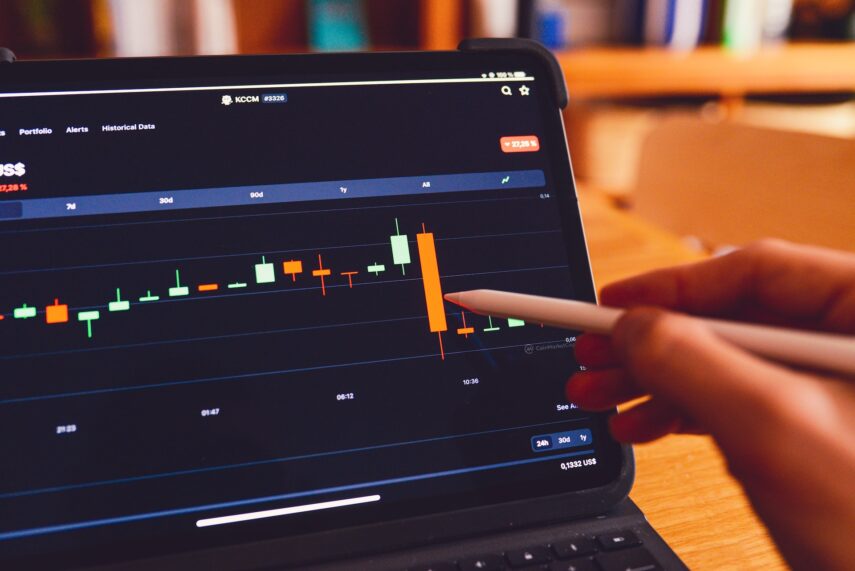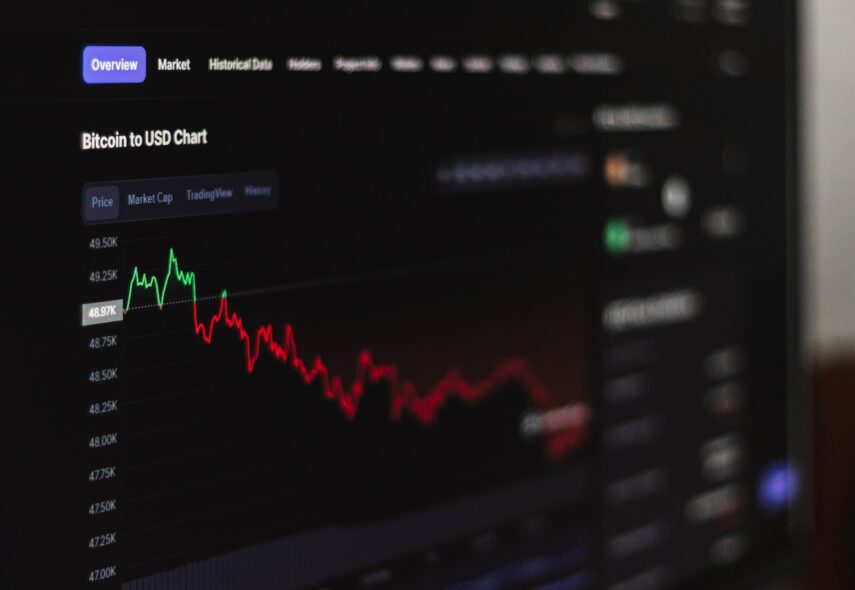The terms “investment” and “trading” are frequently used interchangeably. However, they are quite distinct from one another, and each one possesses its own unique qualities when it pertains to cryptocurrencies.
While both investing and trading in cryptocurrency are possible, the best way to enter the cryptocurrency markets will depend on the trading technique you employ.
Readers of this article will gain an understanding of the distinctions between investing in and trading cryptocurrency, as well as which approach is more suited to various investor profiles.
Investing vs Trading Cryptocurrency
In essence, trading and investing in cryptocurrencies entails buying and selling different digital currencies on the open market. But the amount of time between buying and selling these assets is very different between investing and trading.
What Is Investing?

Investing is the practice of purchasing an asset or security with the expectation of earning a return on the purchase price through appreciation in value over the long term.
Long-term investors in cryptocurrency are also known as “HODLers,” a name that originates from a well-known typo of the word “holding” that gained widespread attention online. HODL is an abbreviation for “hold on for dear life.”
It is common practice for investors to seek out crypto assets with solid fundamentals, in the hopes that their value would rise in the long run. No matter how the market performs during bull and bear cycles, they intend to keep holding onto their coins.
Like Warren Buffett’s value investing technique, the thinking behind cryptocurrency investments is based on a combination of market analysis and speculation. The strategy entails looking for assets that are being sold for less than they are worth.
What Is Trading?
The goal of trading is to gain quick money by betting on the direction of the price of an asset or security, usually within the same day.
To maximize profits in a short period of time, traders focus on making as many trades as possible without paying too much attention to an asset’s underlying value.
In order to make profitable trades, traders pay close attention to both fundamental and technical indicators, as well as market-moving news. Traders can make or lose a lot of money in the crypto market due to its extreme volatility, making it one of the most fascinating marketplaces to participate in.
The good news is that trading allows you to profit in either a rising or falling market by simply shorting or going long. Trading “long” means you bought at a lower price with the expectation of selling at a greater price later. On the other hand, shorting involves stepping into the market at a greater price with the intention of benefitting from a price fall.
The Differences Between Investing and Trading in Crypto

Given the frequent interchangeability between investing and trading, it would be understandable if you came to the conclusion that they mean the same thing. However, trading cryptocurrencies and investing in them are two quite different activities.
When it comes to cryptocurrencies, investing is a longer-term strategy that includes learning about a coin’s foundations, opening an account with a cryptocurrency exchange to buy it, and keeping it in a safe cryptocurrency wallet. To enter the market with the intention of keeping coins in their possession for a period of time that could range from a few months to several years in order to achieve their goals, investors need to have the technical knowledge necessary to transfer and store cryptocurrency.
The trading of cryptocurrencies is a short-term strategy that is centered on the day-to-day fluctuations in the price of these assets. Traders care more about price volatility so that they can make short-term bets on a coin’s value. Traders, in contrast to investors, are primarily concerned with timing the market based on the results of technical analysis.
Which Is Better, to Hold or Trade Crypto?
Investment returns on cryptocurrency holdings and trades vary widely depending on the individual’s motivation, trading technique, and level of expertise. In addition, market participants should carefully weigh the benefits and drawbacks of both strategies before committing to anyone.
Some may claim that the potential gain from investing is lower than that from trading because of the reduced level of risk. Well, not if they’re a highly successful trader.
Professional traders can make a few percent ROI on most trading days, and investors can expect their portfolio values to rise over the course of a week (if there is a rise in market price).
However, a trader who is proficient at timing the market can profit from a falling market. Leverage is an option available to traders that increases their potential for gain while requiring a smaller initial investment. Leverage can increase profits when markets are favorable, but it can also magnify losses when conditions reverse.
However, there are extra benefits for investors who retain cryptocurrency for the long term. Some of the things people can do with coins are staking and yield farming, and getting access to airdrops.
Before settling on a risk management strategy, traders and investors must take into account a number of considerations.
Pros and Cons of Investing

Think carefully about the potential benefits and risks of investing in cryptocurrencies before making any initial purchases.
Pros
- It’s less nerve-wracking than constantly monitoring the market and it can help you accumulate wealth over time.
- Fewer commission costs and taxable events are incurred when investing.
- Comparatively safer than other forms of investment, such as trading
- Investing paves the way for more earnings in the form of airdrops, stakes, yield farming, and other opportunities.
Cons
- Keeping and exchanging cryptocurrency requires consumers to have technical knowledge.
- Return on investment (ROI) is reliant upon the patience of the investor over the course of a longer period of time.
Pros and Cons of Trading

Prior to actually making any trades, you should give some serious thought to the possible rewards and hazards of trading in cryptocurrencies.
Pros
- Because traders can choose whether to go long or short, they can make money in both rising and falling markets.
- Traders stand a good chance of making a substantial profit in a relatively brief period of time.
- Leverage enables traders to trade with relatively low amounts of capital while simultaneously increasing the size of their potential gains.
- With crypto CFDs, traders may speculate on cryptocurrency prices without worrying about the difficulties of storing or exchanging the underlying asset.
Cons
- Because trading involves the active buying and selling of cryptocurrencies, it is subject to a greater number of taxable activities and commission fees.
- Trading on the cryptocurrency market is loaded with risk due to its extremely volatile nature.
- The availability of leverage trading can result in a multiplication of the losses incurred by users.
- There is a possibility that traders will not be able to make a profit from other means of yield creation such as staking and liquidity mining.
Alternatives to Hold or Trade Crypto

There are more rewarding options than “HODLing” or trading in order to acquire access to the crypto markets. Mining and liquidity mining are the two most typical examples.
-
Mining
To ensure the safety of a cryptocurrency network, miners use powerful computers to solve difficult cryptographic problems in exchange for transaction fees and newly issued tokens. Because mining is a race to the finish, the reward goes to whoever solves the cryptographic challenge first.
When compared to simply buying and selling cryptocurrency, miners put their capital to work by purchasing mining hardware that generates massive amounts of processing power. When miners get their hands on mining rewards, they can trade them in on a cryptocurrency exchange for fiat currency. In addition, to increase their rate of return, miners frequently combine their computer power into larger groups. Each miner receives an equitable share of the reward in proportion to the amount of processing power they contributed.
-
Liquidity Mining
The process of providing liquidity in order to support the efficiency of DeFi protocols and, in exchange, getting transaction cost discounts and additional tokens as incentives are known as “liquidity mining .”
The amount of liquidity that a provider brings to a DeFi liquidity pool is reflected in the number of liquidity provider tokens, also known as LP tokens, that the provider receives. These LP tokens may be used for staking or liquidity on other crypto ventures operating on the same blockchain, giving investors the opportunity to accrue several rewards simultaneously.
Conclusion
There are skilled traders and investors operating in the cryptocurrency market. But what about those lucky investors and traders who keep striking it big time repeatedly? They are nonexistent. This is due to the fact that both approaches take significant dedication and time to implement. Whichever strategy you adopt, it is crucial that you ground it in extensive research and a thorough comprehension of the industry. You can check scam traders here.







